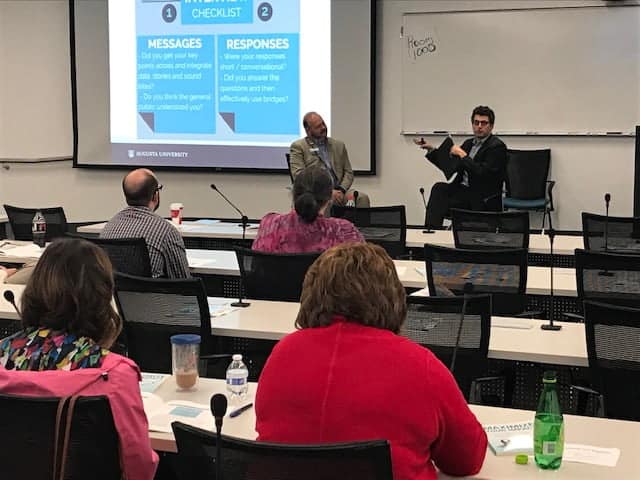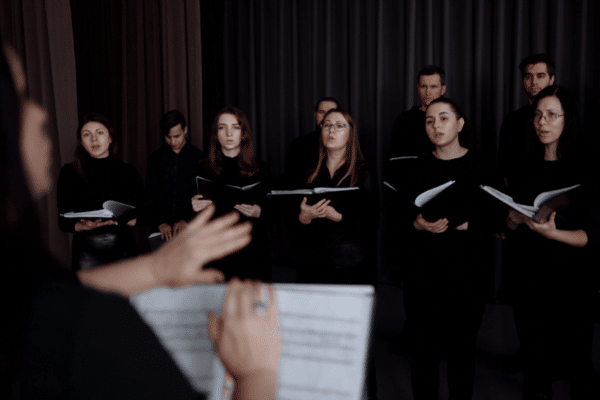Imagine you’re listening to a choir or a musical group and everyone is singing from a different song sheet. It will sound terrible. There wouldn’t be any synchronization amongst the group. You would be likely to run for the exits. Listening to a group that uses the same song sheet would obviously be a different listening experience (so long as choir has some singing ability!).
“Song sheets” in a business setting are messaging or talking points. Like the example above, many teams within organizations are “singing” from all different messaging documents, leading to confusion in the marketplace. It is difficult to have a positive impact and achieve key objectives when individuals and teams are not aligned on a message.
A messaging workshop is one way to ensure that your messaging is clear and synchronized across the organization. The results of a messaging workshop can:
· Foster internal alignment around goals.
· Help you and your colleagues communicate a value proposition in a compelling way that resonates with your target audience.
· Increase brand visibility.
· Develop confidence among team members.
· Serve as a guide in ongoing marketing communication activities.
Messaging Workshops – Approaches to Consider
I have led several message training workshops for different organizations and have seen first-hand how they can help create the above outcomes. You can run a messaging workshop internally, though an outside source can be particularly helpful in bringing new external perspectives, exposing any blind spots that might not be apparent and helping the team to avoid groupthink. An experienced outside facilitator is also accustomed to posing the right types of questions and leading the ideal exercises that will ultimately lead to insight and clarity.
Whether you do a messaging workshop internally or if you are considering bringing on an outside source, I recommend you consider incorporating the following approaches and activities.
1. Bring as many relevant team members for experiential learning.
Leaders often think that there is complete consensus and clarity around a basic question related to the organization’s purpose and mission. But a simple question and giving team members the opportunity to voice their opinions often reveals a different reality. The workshop presenter or team leader doesn’t craft the message, but rather asks the right questions that lead to discussion, discovery, clarity and ultimately alignment.

Augusta University.
A messaging workshop should be experiential. Think about how you learned to drive a car. Reading the handbook only got you so far. You had to practice driving by getting out on the road. Likewise, for a messaging workshop, you will see that learning and impact is happening when attendees actually are proactively practicing and engaging with the content. Spoonfeeding so-called right and wrong answers is likely to have the same impact as giving an aspiring driver the rulebook to drive without giving the person the opportunity to get behind the wheel. The colleague might have retained some information, but it will hardly be useful when “hitting the road” and practically communicating with different stakeholders. When colleagues are involved in crafting the messaging, they are more likely to be engaged in the process and ultimately serve as that organizational ambassador who represents the team effectively.
2. Incorporate purpose.
When thinking about your message, make it a point to understand the team or organization’s purpose. Begin to think about what you want to achieve as a company and why it is important. Your message should be inspirational and should have purpose behind it.
For example, Wikipedia’s inspirational message is “Imagine a world where every human being can freely share in the sum of all knowledge”. This message is realistic and authentic as well as short and to the point. Your message should be unique to why your company or team exists and what you want to accomplish.
3. Spend time articulating a value proposition.
A value proposition is a promise of value that will be delivered, communicated and acknowledged. This statement needs to focus on benefits, not the features. Very few people care about the inside technological features of their mobile phones. Rather, they want to know how it will benefit them. All too often, organizations water down their value propositions by overtilting on the features as opposed to shining a spotlight on the benefits for a particular external audience.
A messaging workshop is the ideal format for individuals to hone in on the key statement the team or organization wants to be known for. It an opportunity to delve into questions like:
– What makes us unique?
– Who is our audience?
– How does our product or service make a difference in our audiences’ lives?
4. Fill out your message map with stories and and examples.
I like to encourage my workshop audiences to flesh out their value propositions by articulating 3 to 5 related messages. These messages are essentially the backbone to the value proposition. Let’s revert back to the Wikipedia example. It is great that they say “Imagine a world where every human being can freely share in the sum of all knowledge”. If you are not familiar with Wikipedia, you will want to see how they actually do this.
I worked with a business school in Slovenia. There was alignment around the idea that the school was “Developing ethical leaders, while addressing complex business issues corporations face today.” Supporting this value proposition, we articulated three key messages: the school attracted top professors from all around the world, it taught leadership with a unique approach of integrating the arts, and it provided a creative environment for creative leadership. For each message, we articulated stories and examples. The message map was ultimately reflected on a new website.
5. Use the messaging map as a guide for ongoing marketing communications activities.
If you feel that your marketing communications activities – using owned, shared, earned, or paid media – lack focus – then the message map can be your new guide that provides direction. You can think about creating a series of campaigns that tie directly to the messaging map. So for example, you create content – say a podcast or video series – around one of the key messages. In addition, some of the compelling stories drawn out can be the basis for a media pitch. You can also incorporate your messages into paid advertising and social media campaigns. Over time, you can test to see how the messages are resonating.
6. Follow-up.
It is imperative that follow-up support is provided, both in the short and long term. You might have a great messaging workshop. There is consensus and enthusiasm around the value proposition, the related key messages and the related marketing activities that need to happen to reinforce the messages. But it is a missed opportunity if participants don’t continue with this momentum after the workshop. Follow-up instills accountability, ensuring that individuals are taking action and doing follow-up work.
As part of my messaging workshop, I provide follow-up support in the short term and the long term. This last step should not be overlooked and is very important to ensure impact.
If you feel your team is out of tune in how it communicates its messages, I trust that adopting these approaches and activities will lead to far greater unison and harmony that moves the needle for your team or organization.
Kevin Anselmo is the founder of Experiential Communications, a communications consulting company based out of Sarasota, Florida. Among his services are running messaging workshops. Contact him to discuss running a messaging workshop for your team or organization at kevin@experientialcommunications.com.

